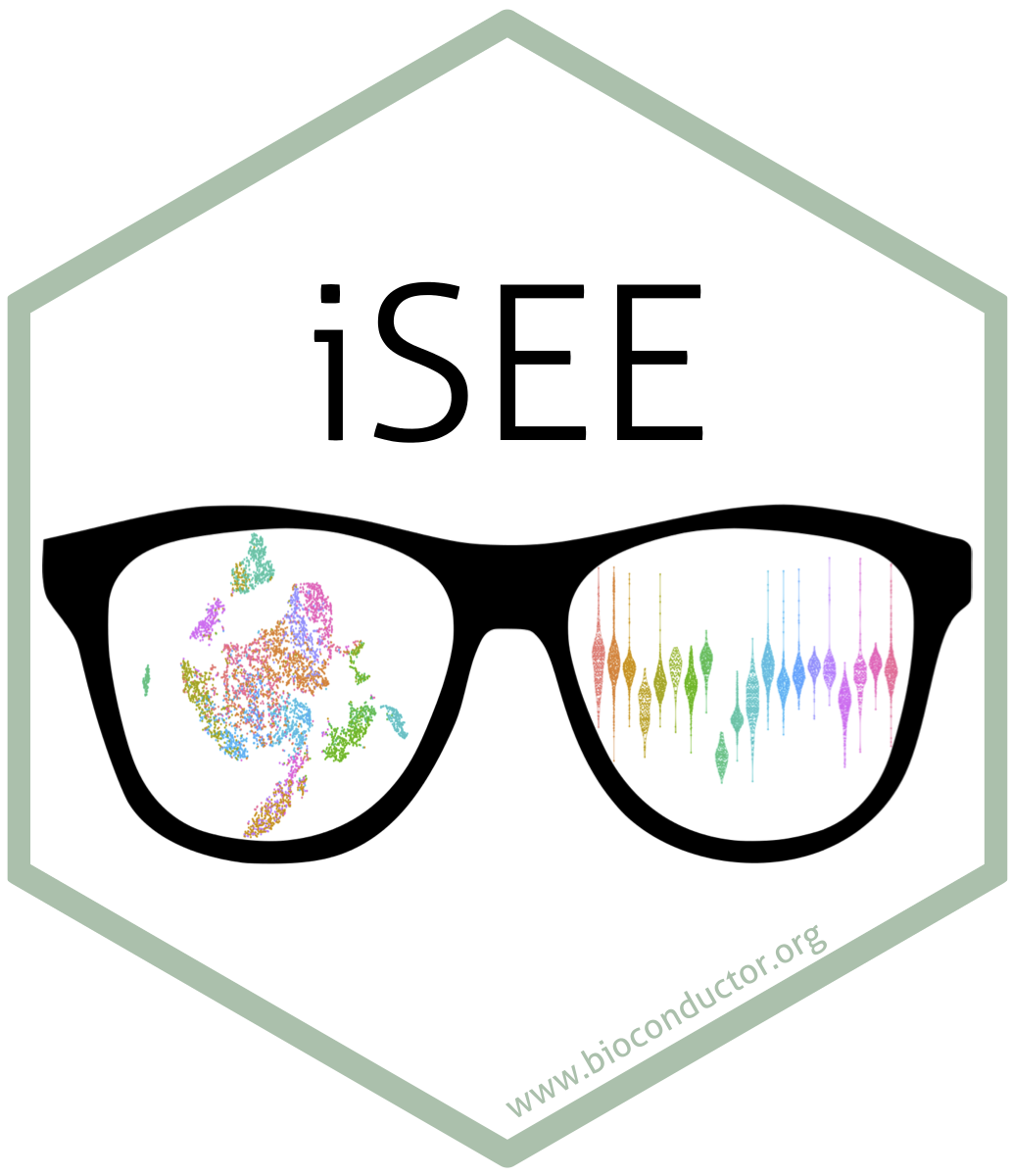iUSEiSEE - About this workshop
Federico
Marini1,
Najla Abassi2
Collection of material developed by the iSEE core dev team
(Kevin
Rue-Albrecht, Federico Marini, Charlotte Soneson, Aaron Lun)
Source: vignettes/about_this_workshop_00.Rmd
about_this_workshop_00.Rmd
Description
The iSEE package (Rue-Albrecht et al. 2018) is a flexible, powerful and extendible application to explore any dataset stored in SummarizedExperiment objects, including single cell, spatially resolved data, but also bulk data (transcriptomics and proteomics being just two examples of what can efficiently fit in there!).
iSEE enables a multitude of panels to gain in-depth insight in your data; it does so combining interactivity and reproducibility, and providing an ideal companion to other tools (such as CELLxGENE) for deeper dives into data.
This package provides a complete overview of the functionality of the iSEE Bioconductor package, and is intended as some kind of “masterclass-level” workshop - indeed, the material is enough to cover a full-day workshop on iSEE.
Pre-requisites
- Familiarity with bulk or single-cell sequencing data (ideally scRNA-seq)
- Familiarity with the SummarizedExperiment/SingleCellExperiment class, or alternatively the Seurat or AnnData frameworks - basically, any of the widely used ecosystem for working with/storing/processing single cell data
- Familiarity with single-cell data visualizations and representations
Participation
Participants will be able (and heartily invited) to follow along in the live coding parts of the workshop. This is very much intended as a hands-on learning resource.
Given the hands-on nature of this, this is going to be a BYOD (Bring Your Own Device) event - if cloud-based setups are provided, this information will be passed on in advance to the participants. Nonetheless, we value the side effect of participants installing a working environment as a part of the learning objectives.
Participants will (likely) use a set of stickers to indicate their progress throughout the material, to be attached onto the laptop lid. In brief:
- Yellow sticker: “I am working on the task”
- Green sticker: “I am done with the task”
- Red sticker: “I am stuck on this, could you please come help me?”
We do stress the importance of working together on such tasks, therefore participants are very encouraged to talk to their neighbors during the task sessions!
R / Bioconductor packages used
-
iSEE: https://bioconductor.org/packages/iSEE -
iSEEu: https://bioconductor.org/packages/iSEEu -
iSEEde: https://bioconductor.org/packages/iSEEde -
iSEEpathways: https://bioconductor.org/packages/iSEEpathways -
iSEEhub: https://bioconductor.org/packages/iSEEhub -
iSEEindex: https://bioconductor.org/packages/iSEEindex -
iSEEfier: https://bioconductor.org/packages/iSEEfier
Outline of the course
After a short presentation, we will start going through the material
in the vignettes folder:
- iUSEiSEE - a tl;dr version of the whole, which can be used as a compact summary of the content
- Overview on iSEE - a detailed overview on iSEE and its functionality
- The iSEE cookbook - a set of self-contained recipes with simple-to-advanced tasks one can complete within iSEE
- Bonus advanced content around iSEE - some additional content, focused on some advanced or more specific tasks to carry out with iSEE
Workshop goals and objectives
Learning goals
- Outline the features of iSEE, built upon the RStudio Shiny framework
- Utilize interactive GUI components and layouts to efficiently extract information from biological data sets
- Describe how to construct interactive apps and custom panels
- Demonstrate how these package can smoothly be integrated into and enhance existing workflows for the datasets at hand
Learning objectives
- Set up a local environment for running iSEE apps
- Interact with components of the iSEE user interface to visually inspect and discuss various data sets
- Identify and locate configurable aspects of iSEE apps
- Practice interactive visualization over a single-cell RNA-sequencing workflow
- Imagine use cases and future developments for interactive visualization as part of computational workflows
- Design and create iSEE instances for collections of datasets